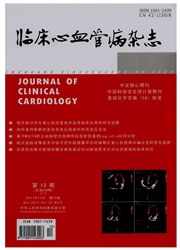

 中文摘要:
中文摘要:
近年来肿瘤和心血管疾病的发病率呈显著上升趋势,肿瘤治疗中具有潜在心脏毒性的药物使用范围不断扩大,其导致的心功能不全等并发症也一直受到广泛关注。如何对化疗相关的心脏毒性进行早期诊断和治疗,并尽可能地降低心脏毒性损伤的程度,以最终改善患者预后已成为肿瘤医师和心血管医师共同关注的重要课题。本文主要根据2014美国UCG学会(ASE)和欧洲心血管成像协会(EACI)联合发表的共识声明,主要介绍多种影像学技术和生物学标志等方法对癌症患者进行心脏监测和评估,以降低癌症患者心血管并发症,并号召心内科医师与肿瘤科医师密切合作,早期诊断和预防性治疗可能是最理想的途径。
 英文摘要:
英文摘要:
In recent years,the incidence of both cancer and cardiovascular disease has shown a significant upward trend.Furthermore,application of the anti antineoplastic drugs with cardiotoxicity is expanding.Therefore,more attention is being paid on antineoplastic drugcancer drug-induced heart dysfunction How to early diagnosis and treatment in chemotherapy-related cardiotoxicity and minimize the damage,has become an important issue for cardiologists and oncologists.According to the joint declaration issued by 2014 American Society of UCG(ASE)and the European Association of Cardiovascular Imaging(EACI),the article introduces a variety of imaging techniques and biomarkers methods,which are used to evaluate the heart function in patients underlying antineoplastic drug treatment.In this way the risk of cardiovascular complications should be reduced.The collaboration between cardiologists and oncologists should be enhancedd,which can facilitate early diagnosis and preventive treatment in chemotherapy-related cardiotoxicity.
 同期刊论文项目
同期刊论文项目
 同项目期刊论文
同项目期刊论文
 期刊信息
期刊信息
